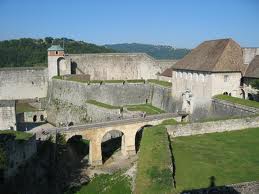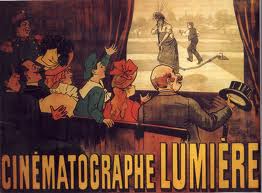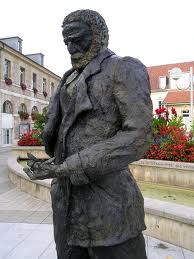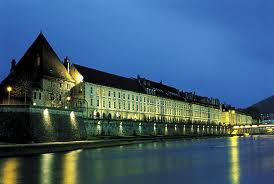
![]()
Index • |
Welcome • |
About
Us • |
21st Century • The Future |
World
Travel • Destinations |
Reviews • Books & Film |
Dreamscapes • Original Fiction |
Opinion
& Lifestyle • Politics & Living |
Film
Space • Movies in depth |
Kid's
Books • Reviews & stories |
Dreamscapes Two • More Original Fiction |
The International Writers Magazine: Travel
Besancon: Victor Hugo & Lumiere Brothers
• Saleem Ayoub Quna*
"This century was two years old when a frail helpless child without color, voice or prospect, suspended to life through his ailing mother's care only was born in this city". With these words from a poem entitled "Leaves of autumn", Victor Hugo the French writer and poet described his coming to this world in 1802 in Besancon
More than 200 years later and as this century turned 11, destiny took me to the same place.
My social French network has provided me with scant information about Besancon. A good number of my Jordanian friends, beneficiaries of French scholarships, pursued their undergraduate and postgraduate studies there. They all studied French language and literature which gave me the initial incomplete impression that in this city one can only study French!
Therefore, Besancon to me was a little remote French town or a large village at best, somewhere in the far south of metropolitan and glamorous Paris, where the pace of life ticks to a much faster multicultural, multicolor and multi-ethnic beat.
But when my eyes first snapped a quick panoramic view of this city from the surrounding forest-like hills, my initial impression was challenged by the new visual reality. Modern business headquarters and residential areas of white and grey high-rise buildings dotted the expanded green slopes peacefully embracing the downtown area at the bottom of the valley. Due to the thickness of the trees and the busy traffic going in and out of the city, I only could catch distant elusive images of the city's suburbs.
But as the car kept smoothly rolling on the descending winding road, main landmarks such as buildings, bridges over the river "Le Doubs" pronounced "lo dou", parks, road signs, intersections, shops and pedestrians started emerging more vividly. With each yard run over, I started realizing how modest my initial impression of this city was. After all, I was about to enter the capital city of Franche-Comte Department of 250,000 inhabitants.
It was the world capital-city of watch-making until the end of World War II, and also the birthplace of the first French filmmakers, brothers Auguste Lumiere 1862, and Louis-Jean Lumiere 1864. To me Besancon now looked mature, confident, welcoming and colorful. A sudden feeling of satisfaction of a breakthrough fell upon me. My companion to this visit was Michel Jannin 68, who few years earlier, had retired from his teaching post at the University of Franche-Comte located within the little peninsula, literary encircled, by the blue waters of the river "Le Doubs". This University existed since the 16th century and today accommodates more than 25,000 students of different nationalities. Locals call the peninsula "Le Boucle", because it simply looks like a huge ring or a tennis racket, whose strings are made of a web of streets and alleys lined up on both sides by red-tiled old brown buildings and houses, including churches and museums. The city came under the limelight during the 16th and 17th centuries and the glorious days of Louis XIV, who certainly left his perpetual fingerprints on it. But come the industrial revolution in the 19th century, the city's appetite and need for expansion had to be met by incorporating its adjacent terrains and slopes.
Michel knew his way to the huge parking lot called "Chamars" at the southern angle of the "Doubs", where hundreds of cars can park all day free, under the shade of spaced-out tall trees, walking treks and benches. After two rounds, we spotted a departing driver who ceded her space to us with a smile. "You can say that we are lucky today," Michel commented. "Because we need few hours to make a good first tour of the 'Boucle'." The time was 10am.
The first Plaza we walked through "Place de la Revolution", was braced by well-maintained symmetrically lined up buildings of equal heights. At one of its corners, stood the Museum of Fine Arts and Archeology which houses among others, some works of Gustave Courbet, the Maitre of the Realist School of Art. This painter became so popular and revered here to the extent that the-Franche-Comte-region was also called the country of Courbet. Most of Courbet's paintings depicting nature and real countryside life of the region, strangely enough, are not on display here or in Paris but in the US; a little mystery that warrants investigation!
The sidewalks at the feet of those buildings were turned into nice shaded terrace cafés and restaurants that serve an assortment of international dishes. After touring the museum, one could enjoy what these cafes can offer, plus the view of the huge plaza swarming with pedestrians and street musicians. The second stroll in the labyrinth-like pedestrian zone ended at a smaller plaza called "Hugo Place". Overlooking this square were the two houses where bothers Lumiere and Victor Hugo spent many years of their youth. But rest assured that Hugo and brothers Lumiere could not have hanged out together, simply because a time-gap of six decades separated their birthdays!
Like many other French cities, Besancon also hosts a great number of immigrants from Africa and Asia. "Le Marche Planoise" is an open-air popular commercial centre where merchants and customers can simultaneously communicate and bargain in Arabic, Turkish and French with the same level of fluency. Many of them still wear their traditional attires. Business seems flourishing here especially that the prices of typical oriental merchandise are more competitive!
Our last stop for the day was at a large cozy triangular sand-paved public park called "La Place de Grandville".
Three things drew my attention here: A replica of the Richard Wallace Fountain, a statue of Victor Hugo (seated) few yards away from a Café simply named "1802", the year when Hugo was born. On each table a two-fold white paper was imprinted with few lines of Hugo's own hand-written prose, next to his picture (standing with his armed crossed). We sat in the softly-lit open-air section of the Café enjoying the tender breeze and some distant musical tunes. What could be more alluring to have a good bite after this day-long walk, I thought to myself! "I feel like having dinner at the invitation of our friend Victor:" I told Michel! Time now was 10pm! The imposing Citadel
"You cannot say you visited Besancon if you did not see its Citadel". Michel kept telling me this for three days before we arranged to tour the place.
Long before Louis XIV asked Sebastian de Vauban (1633-1707), to build the Citadel, now UNESCO listed as a world cultural heritage, Besancon had been a hot seat contested since the Gallo-Roman times to the days of all types of war lords of Spain, Germany, Italy and France in the Middle Ages.
Until the 17th century, the city remained under Spanish domination and properly was called Franche-Comte, meaning Free-County or zone. Its inhabitants preferred to remain under Spanish rule because among other things, they were exempted from paying certain taxes. But Louis XIV wanted to annex this region to his expanding kingdom since it was strategically located in the heart of French territory. Finally, his armies took control of it. To consolidate his reign, Louis XIV asked his counselor and military architect, Sebastian de Vauban, to fortify the city. Within the framework of this plan, he built other six different fortresses surrounding the city. During his career, Vauban supervised the fortification of other 300 similar sites across France.The Citadel can be reached by car. But a good walk would be necessary to tour its inner compounds after crossing a bridge over a deep dug-out ditch. The winding, sea-wave like parapets at the steep edges of the hill has several observation police kiosk-size posts from where soldiers could control any advancing or menacing movement in the valley below. From these posts the view of the "Boucle" and the adjacent landscape offers a unique spectacle.
Within the walls of the Citadel you can visit a number of museums such as the Regional Folklore Museum, Museum of the French Resistance, the Museum of Natural History and a large zoo which was set up in the former fortification trenches.
After the hours-long tour of the different attractions of the Citadel, we sat in the outer section of a small café in there and tasted some of the traditional cuisines of the region, its local wine and bread. It was also a moment for reflection: The big and little secrets of the past-elevated-immense-Citadel have kept behind its walls, for more than 400 years versus the modern omnipresent details of today's life-style down in the "Boucle". How many of the human communities around the world still struggling to accommodate between their unchangeable inheritance of past and the present way of life, they are locked in?
By the time we had to leave, I had already lost track of the time. But I clearly remember how the blushing sun was sinking behind the red horizon, while slowly pulling away its last energy rays casted over the Citadel and the roof-tops of the "Boucle".*Saleem Ayoub Quna is an independent journalist based in Amman-Jordan.
More travel
© saleem quna August 2011
b2beinitiative@yahoo.com
City Guide Here





